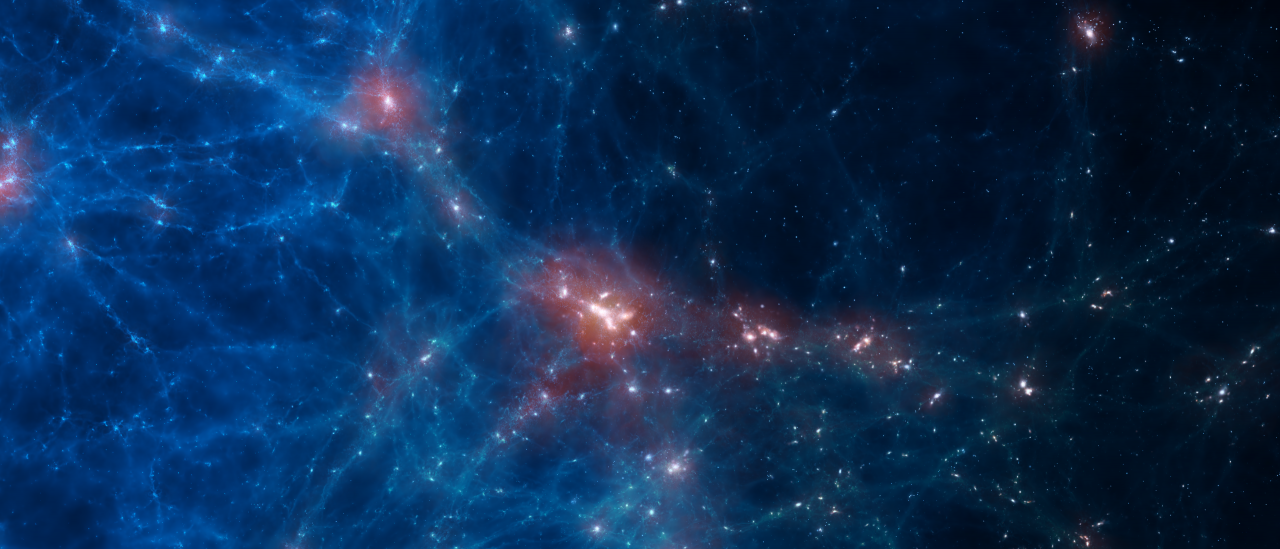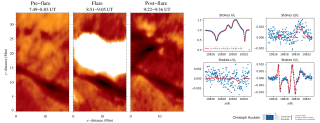General
Members
Results
EDGE/C-EAGLE With the completion of the main sample of simulations, the post-processing phase has been started. Dalla Vecchia developed an analysis program to compute luminosities of SSPs and magnitudes of galaxies of ~30 resimulated clusters. The code makes use of the stellar spectra library EMILES, developed at the IAC and recently extended to cover a larger wavelength range. EUCLID Within the EUCLID collaboration, a total of 300 cosmological, N-body simulations of a volume representative of the observed universe were performed. The same sample of initial conditions was evolved with different techniques by other members of the collaboration. The comparison of the different techniques will allow to assess their accuracy in the estimation of the covariance matrix, thus the errors in the measurements from large-scale structure surveys. GALAXY INTERACTIONS IN CLUSTERS For several decades, it has been known that stellar bars in disc galaxies can be triggered by interactions, or by internal processes such as dynamical instabilities. Martínez-Valpuesta et al. (2017) explore the differences between these two mechanisms using numerical simulations. They used two groups of simulations based on isolated galaxies, one group in which a bar develops naturally, and another group in which the bar could not develop in isolation. The rest of the simulations recreate 1:1 coplanar fly-by interactions computed with the impulse approximation. Compared with equivalent isolated galaxies, they find that bars affected or triggered by interactions: (i) remain in the slow regime for longer, (ii) are boxier in face-on views and (iii) they host kinematically hotter discs. Within this set of simulations, strong differences between retrograde or prograde fly-bys are not seen. They also show that slow interactions can trigger bar formation.
Scientific activity
Related publications
-
The EAGLE simulations of galaxy formation: the importance of the hydrodynamics schemeSchaller, M. et al.
Advertised on:
122015 -
The BaLROG project - I. Quantifying the influence of bars on the kinematics of nearby galaxiesSeidel, M. K. et al.
Advertised on:
72015 -
Hα kinematics of S4G spiral galaxies - II. Data description and non-circular motionsErroz-Ferrer, S. et al.
Advertised on:
72015 -
Colours and luminosities of z = 0.1 galaxies in the EAGLE simulationTrayford, J. W. et al.
Advertised on:
92015 -
Molecular hydrogen abundances of galaxies in the EAGLE simulationsLagos, C. P. et al.
Advertised on:
102015 -
The alignment and shape of dark matter, stellar, and hot gas distributions in the EAGLE and cosmo-OWLS simulationsTheuns, Tom et al.
Advertised on:
102015 -
The effect of baryons on the inner density profiles of rich clustersMcCarthy, I. G. et al.
Advertised on:
92015 -
Baryon effects on the internal structure of ΛCDM haloes in the EAGLE simulationsSchaller, Matthieu et al.
Advertised on:
82015 -
Spatially adaptive radiation-hydrodynamical simulations of galaxy formation during cosmological reionizationPawlik, A. H. et al.
Advertised on:
82015 -
The First Billion Years project: the escape fraction of ionizing photons in the epoch of reionizationPaardekooper, J.-P. et al.
Advertised on:
82015 -
Evolution of galaxy stellar masses and star formation rates in the EAGLE simulationsFurlong, M. et al.
Advertised on:
72015 -
On the morphology of dust lanes in galactic barsSánchez-Menguiano, L. et al.
Advertised on:
72015 -
The EAGLE simulations of galaxy formation: calibration of subgrid physics and model variationsCrain, R. A. et al.
Advertised on:
62015 -
A cosmological context for compact massive galaxiesStringer, M. et al.
Advertised on:
52015 -
-
Made-to-measure models of the Galactic box/peanut bulge: stellar and total mass in the bulge regionPortail, M. et al.
Advertised on:
32015 -
The EAGLE project: simulating the evolution and assembly of galaxies and their environmentsSchaye, J. et al.
Advertised on:
12015 -
The First Billion Years project: gamma-ray bursts at z > 5Elliott, J. et al.
Advertised on:
22015



![Izquierda - Imagen RGB de la nebulosa de Orión y M43 obtenida filtros estrechos con la cámara WFC en el INT: H alfa (rojo), [S II] 6716+30 (verde), [O III] 5007 (azul). Derecha - Imagen en falso color de la nebulosa planetaria NGC 6778. En azul se ve la emisión en la línea de O II tomada con el filtro sintonizable azul del instrumento OSIRIS en el GTC; en verde imagen con el filtro estrecho de [O III] del Nordic Optical Telescope (NOT). Izquierda - Imagen RGB de la nebulosa de Orión y M43 obtenida filtros estrechos con la cámara WFC en el INT: H alfa (rojo), [S II] 6716+30 (verde), [O III] 5007 (azul). Derecha - Imagen en falso color de la nebulosa planetaria NGC 6778. En azul se ve la emisión en la línea de O II tomada con el filtro sintonizable azul del instrumento OSIRIS en el GTC; en verde imagen con el filtro estrecho de [O III] del Nordic Optical Telescope (NOT).](/sites/default/files/styles/crop_square_2_2_to_320px/public/images/project/imagen_web.jpg?itok=fsBmV9CO)